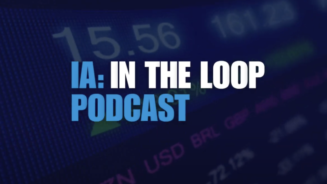Sterling
Sterling hit a three-month high against the US dollar last week, as the minutes from the latest US Federal Reserve meeting revealed that many policymakers favour additional stimulus measures.This came despite some poor borrowing figures out of the UK.
The Chancellor may have to tap the markets for at least £10bn more borrowing than last year, even after the planned £18bn of tax rises and spending cuts. Economists put the looming shortfall down to the weakness of the economy, which has resulted in a fall in tax receipts and a sharp rise in benefit payments.
UK manufacturers reported a fall in both their total and export order books in August, while expectations for output growth have flattened.The balance of -21% represents the lowest return since the end of last year (December -23%).
Similarly, export orders have weakened, with manufacturers reporting a balance of -17%. A small upward revision to Q2 GDP was well flagged, and thus created little movement.
We feel an agreement of sorts will be announced and the euro will improve against sterling this week, edging downwards towards the bottom end of its €1.2500-€1.2800 range.
Against the US dollar, we feel there is room for the pound to move higher over the next few weeks. The Federal Reserve minutes clearly indicated that further Quantitative Easing is possible, and with the US budget shortfall reaching $1.1trn this year, and elections due in November, we see the dollar gradually losing its safe haven status. Look for $1.6000-plus in the weeks to come.
US dollar
The US dollar continues to lose some of its attraction, and its safe haven status, as investors feel more comfortable with more risky assets.
The euro debt issues continue to rumble on but their impact seem to be having a lessening effect on the markets. Investors are gradually looking at other things that could influence the currency going forward, and there a quite a few of them.
The data did not surprise too much last week. Existing Homes Sales rose 2.3% in July to 4.47 million from 4.37 million in the previous month, but missed analysts’ estimates.
New Homes Sales were up more than projected to reach a two-year high, with economists pointing out that there is pent-up demand at the moment. The Flash manufacturing PMI rose slightly, but was still the third-lowest reading in nearly three years.
Durable Goods Orders were way off of analyst’s targets as usual, with a 4.2% increase, but the ex-transportation number came out a disappointing -0.4%.
A failure of the European Central Bank to come up with a plan to satisfy investors will cause a flight back to the greenback, but we feel a compromise will be reached at some stage. Given this, and the fact that US elections are due in November, we feel a gradual depreciation of the US dollar could be seen for the remainder of 2012, with GBP/USD targeting $1.6000 in the next week or two.
Euro
In a quiet week for euro data, the single currency put in a strong performance to reach its highest level against the USD since early July. There were several reasons behind the move, from Federal Reserve minutes pointing to additional stimulus measures in the US to China indicating that adjustments to interest rates and bank reserve requirements are still possible.
Nearer to home, hopes that the upcoming talks between the Greek, German and French heads of state on a possible easing of the budget-tightening requirements may bear fruit are also helping the single currency.
On the data front, euro-area services and manufacturing output contracted for a seventh straight month in August, adding to signs of a deepening economic slump.
A composite index based on a survey of purchasing managers in both industries rose to 46.6 from 46.5 in July, still well below the crucial 50 level. The German economy has proved to be robust although growth has slowed down slightly from a first quarter 0.5% to a second quarter of 0.3%. Exports remained strong, with a 2.5% increase over Q1.
Judging by the recent upward move in the euro, investors are betting on a compromise being reached over Greece, and we tend to go along with that view. While GBP/EUR will probably remain within a broad €1.2500 to €1.2800 range, we can see a move higher towards $1.2750 on EUR/USD this week.
New Zealand Dollar
Along with the Australian dollar, the NZD lost ground against Sterling through last week but gave back some of its gains against the US Dollar after Chinese manufacturing data showed that its second largest trading partner is contracting at a faster pace. This was after it had moved high versus the US dollar following the minutes of the Federal Reserve stating that additional monetary easing in the US is likely.
Data in NZ held no real surprises. Business managers in New Zealand now expect inflation to be less of a problem over the next two years than they did in the second quarter, the Reserve Bank of New Zealand’s third-quarter survey stated. The Trade Balance showed a small surplus for the month of July, a slight surprise.
This week sees no data releases of consequence, so currency moves will depend on events elsewhere.
The outcome of the talks in Europe between Greece, France and Germany probably hold most weight, and a successful outcome could see further falls for the NZD against its peers. Risk would be back in vogue, and as a so-called safe haven currency, you would expect the NZD to lose heavily against the Euro particularly.
At the moment this is all speculation, but, Europe apart, we do feel the fundamentals are slowly moving away from the NZD, and further weakness against both Sterling and the US dollar is possible.
Australian Dollar
The Australian dollar lost ground last week against sterling along with its other commodity trading partners as easing tensions in Europe saw investors move out of safe haven currencies. It also suffered after the Chinese manufacturing index saw its lowest reading since November. China is Australia’s largest trading partner.
Data releases were benign, with Leading Indicators advancing in June as stocks, money supply and industrial production gained.
The Conference Board Leading Index increased slightly in June, following a small gain in May. The gains in building approvals, rural goods exports, and money supply more than offset negative contributions from stock prices and the yield spread.
Despite the gain in June, the six-month change in the leading economic index remained negative, contracting by 0.5%.
We see the AUD losing further ground against sterling in the weeks ahead, with A$1.5500 possible near term. Against the US dollar, both currencies could shed their safe haven status as tensions ease, but the Aussie may lose more ground as investors move out of the commodity currencies.
Canadian Dollar
The Canadian dollar fell against Sterling to its weakest level this month despite comments by Bank of Canada Governor Mark Carney that high borrowing costs ‘may become appropriate’ next year.
Poor economic data weighed on the currency, with Retail Sales showing a surprise fall. They expectedly dropped by 0.4% from May on weaker sales in stores, gas stations and auto dealers.
The figures are the latest to suggest that consumer spending – one of the main supports for the Canadian economy since the 2008 crisis – is slowing down. Wholesale sales were also lower, reversing some of May’s large rise.
We see the status quo being maintained against the US dollar, but an upward bias against Sterling with C$1.5900 a possibility.
Chinese Yuan
A preliminary reading last Thursday of a manufacturing purchasing managers’ index for China by HSBC Holdings Plc and Markit Economics showed the gauge was at 47.8 this month, after a final figure of 49.3 last month. If confirmed, the August figure would extend to 10 months the longest run of readings below 50, the dividing line between contraction and expansion, in the index’s eight-year history.
The official reading will be released this week, but the ongoing sluggishness in the Chinese economy has many worried about the ramifications for the rest of the world.
This Saturday’s PMI figure will give an idea of how the Chinese economy is faring, but it will be action, or lack thereof, from the PBOC this week that will drive the price action. On balance we expect the status quo to be maintained.
Japanese Yen
The yen gained versus most of its 16 major peers last week as declines in Asian stocks and weakening global economic data boosted demand for safe haven assets. It was headed for its biggest five-day advance against the dollar in 12 weeks after reports yesterday showed U.S. jobless claims increased while manufacturing gauges in Europe and China signalled contraction.
The yen has advanced 6.5% in the past six months, the best performance among the 10 developed-nation currencies tracked by Bloomberg Correlation-Weighted Indexes. The dollar gained 2.7%, while the euro declined 4.9% in the same period.
The yen will remain strong so long as there is an element of risk aversion in the air. As the US dollar loses its appeal, this will only serve to make the yen all the more attractive. We therefore expect another material push lower on USD/JPY targeting 77.96. GBP/JPY should hold up if the pound rises further against the greenback.
South African Rand
The rand fell sharply through last week, reacting largely to inflation data showing that the pace of price rises slowed more than forecast last month – potentially giving the Reserve Bank of South Africa more scope to cut interest rates to boost flagging growth.
This coming week brings some important economic indicators, although they may not have a bearing on the central bank interest rate debate. As such, risk appetite around the world is likely to have an ongoing effect on the rand, along with any indicators on the pace of global growth.
We are now close to recent highs at R13.39 and these should be tested this week; whether or not this level is broken is, however, another question.
For more currency data and information on how to assist your clients with their international money transfers, please visit the International Adviser Currency Zone , powered by Moneycorp.




